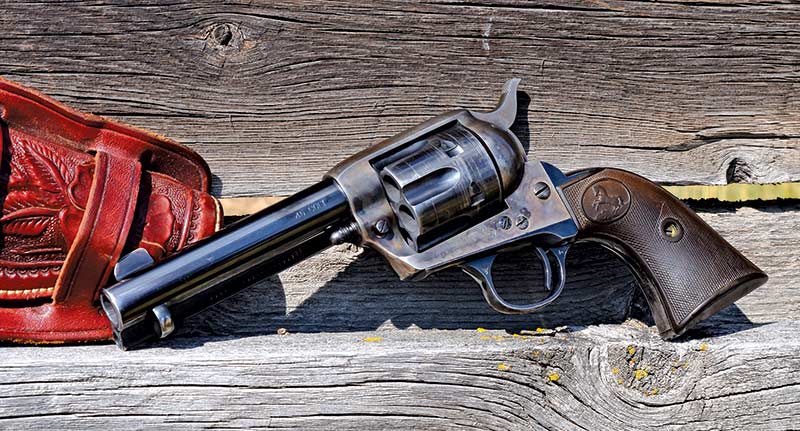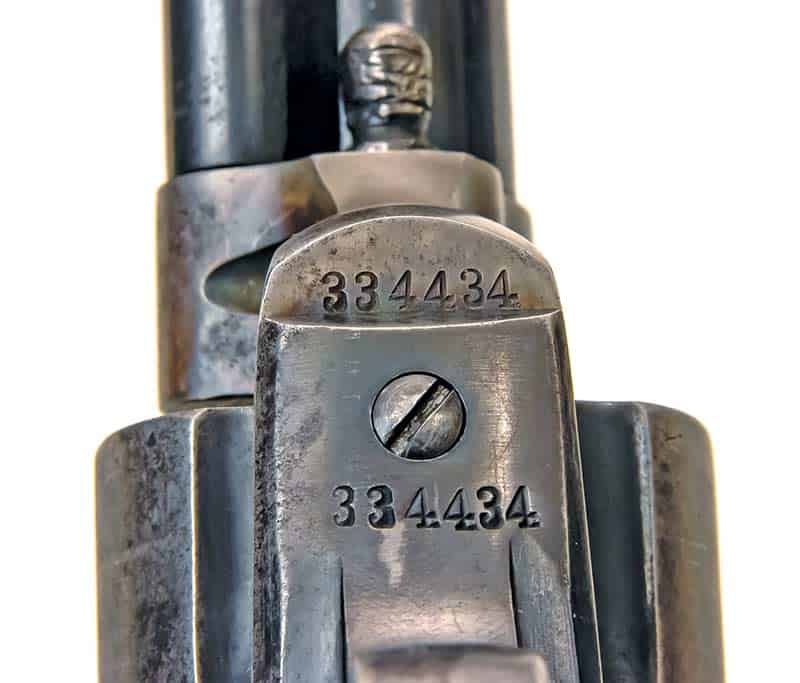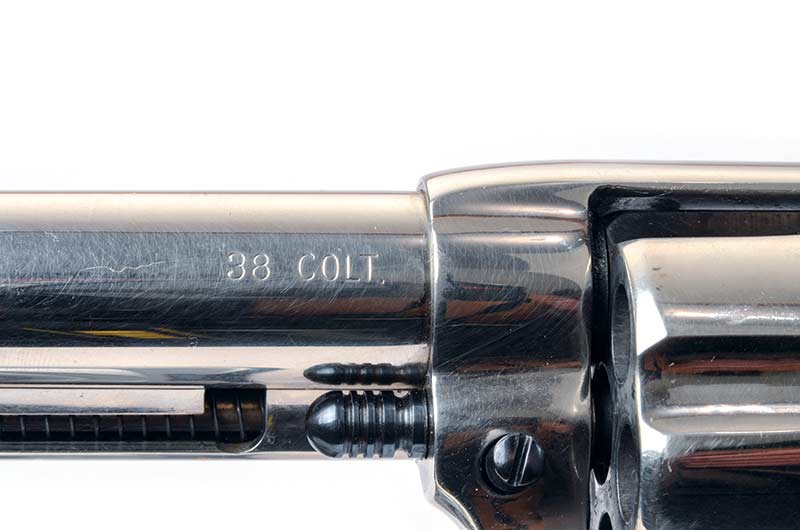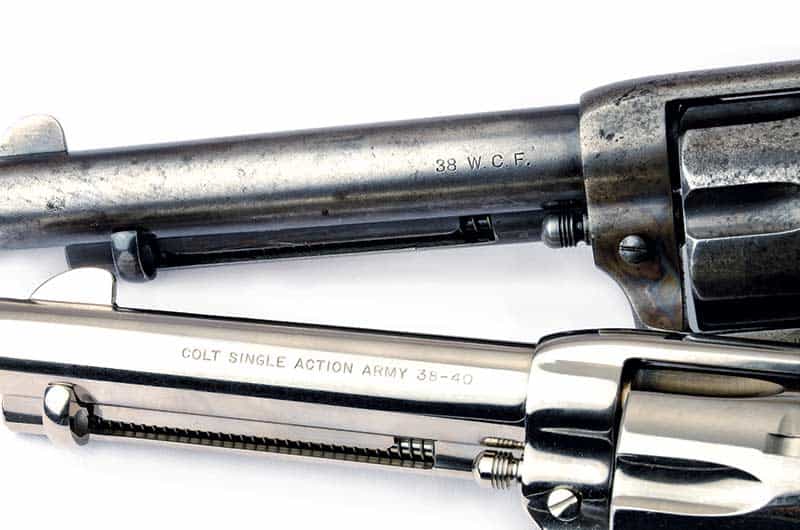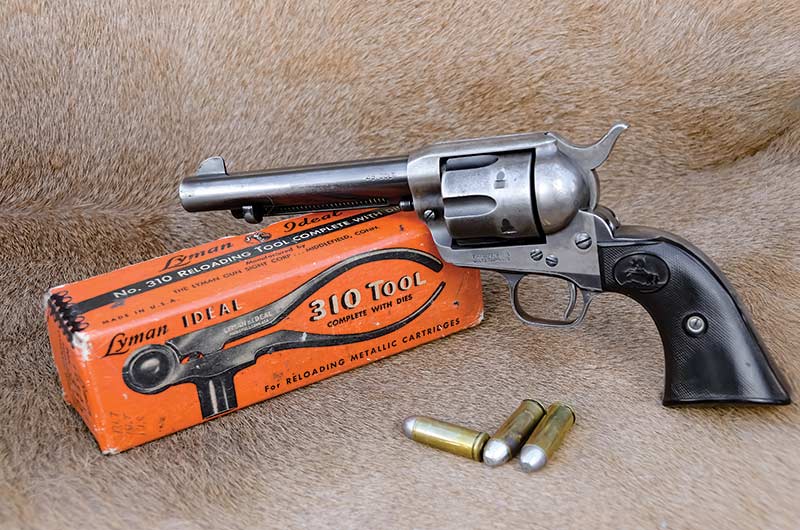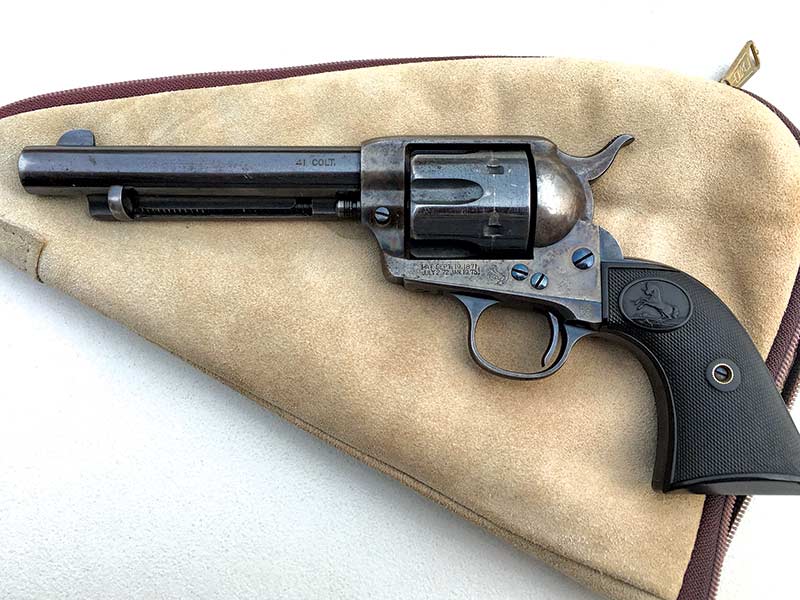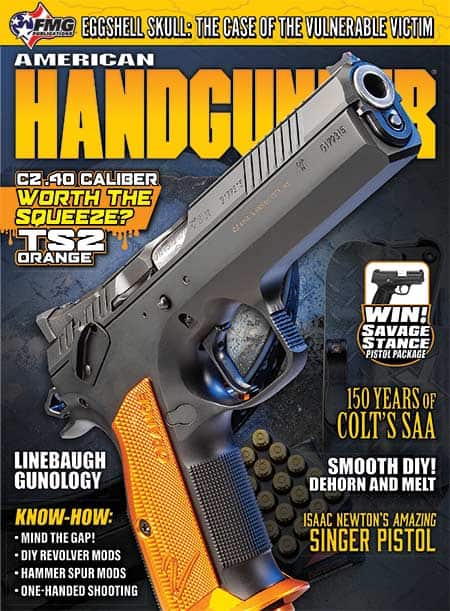An American Icon
150 Years of Colt’s SAA 1st Generation
In 1873 no one involved in the development of Colt’s new “Strap Pistol” or members of the U.S. Army who tested it could have possibly dreamed this revolver would forever be an American icon. That it did as Colt’s Single Action Army, and now 150 years later, it not only remains one of the most recognizable and copied firearms worldwide but has remained in Colt’s production. Keep in mind, that’s less about 17 years of non-production between the 1st and 2nd Generations (1941-1956) and 2nd and 3rd Generations (1974-1976).
At this 150th Anniversary of America’s most iconic handgun, Colt SAAs are in limited production. Available only chambered for its introductory cartridge — .45 Colt. It still comes in choices of 4¾”, 5½” and 7½” barrel lengths. The finish is the time-honored vivid color case hardened frame with blue finish otherwise. Standard grips are checkered hard rubber as was instituted as a replacement for wooden grips well over 100 years ago.
Fun Facts
Be sure of one thing, however. In the early 1870s, this revolver would never have been developed if not for Colt seeking U.S. Government contracts. Another little-known fact is the very first “Strap Pistol” (meaning with top strap) prototypes shipped for U.S. Army testing were not chambered for the famous .45 Colt, which has become near synonymous with the revolver itself. Instead, the Colt factory shipped the U.S. Army testing officers four revolvers chambering S&W’s .44 Russian. At that time, the army’s standard issue revolver was S&W’s Model #3 .44 American. The army testers had to return the prototypes for conversion to .44 American because they had no source for large quantities of .44 Russian ammo. Executives at Colt explained the mistake by saying the .44 Russian was a better cartridge than the .44 American, and so they felt the army would prefer it.
Regardless, all talk of .44s was put aside, and the U.S. Government decided both their handgun and rifle/carbine cartridges would henceforth be of .45 bore size. For revolvers that became the .45 Colt caliber: a copper case with center fire primer holding 30 grains of black powder under 250-grain lead bullets.
A contract for 8,000 of the new .45 revolvers was let to Colt with the first 1,000 arriving at the government-owned Springfield Armory on November 28, 1873. The full contract was completed on March 18, 1874. Cost to the U.S. Government was $13 each including a screwdriver valued at $10. The last of the government’s total of 37,000-plus SAAs was delivered in 1891.
Civilian Sales
That took care of military needs but what about the civilian market? As has always been the case, if a firearm is adopted by the U.S. Armed Forces, its popularity with civilians is assured. It is interesting to note the new Colt .45s went to civilians as quickly as the government. In November 1873, 40 were sold to J.P. Moore, a distributor in New York City, and 100 went to Colt’s London Agency on January 5, 1874. The Prussian Government was shipped 40 Colt .45s to their Spandau Arsenal on December 23, 1873. (These numbers and dates were taken from the book A Study of the Colt Single Action Revolver by Graham, Kopec and Moore.)
First Models
For the first two years of production, all Colt SAAs were of a type. They were all .45s, all had 7½” barrels, and all were either finished with blue and color case hardened frame and hammer or fully nickel-plated. Most were fitted with one-piece walnut grips, but some for the commercial market carried ivory one-piece grips. All had very thin blade front sights — so thin it is easy to cut oneself with them. The rear sight was a simple groove down the revolver’s top strap. They shot so high that at shorter ranges of, say, 25 to 50 yards, which we consider normal handgun distances today, their point of impact was far above the point of aim. In other words, it would have been extremely difficult to hit smallish targets up close. Feats of precision shooting, as shown in Western movies or on television, would have been difficult to the point of impossibility.
Early Caliber History
Colt .45s going to the government had no caliber stamp, but those sold to civilians had only a tiny “.45 cal.” on the left front of their trigger guards. However, only two years into production, Colt bought into the concept of one cartridge for both sixguns and lever guns. Winchester Repeating Arms had been offering lever guns chambered for .44 Henry Rimfire since 1866, and .44 Henry rifles had been available since 1862. In 1875 Colt brought out a special run of over 1,500 Colt .44 Henry single actions. Interestingly, that special run had its own dedicated serial number range.
Then following Winchester’s lead with their Model 1873 .44 WCF (Winchester Center Fire) in late 1877 or early 1878, Colt followed with what I consider one of the most interesting of their big single actions. Early on, the factory named them Colt Frontier Six Shooter. In the beginning, that was acid etched into the left side of their barrels. As time passed, the words were roll stamped and eventually, in the 20th century, the roll stamped marking became Colt Frontier Six Shooter .44-40 or just Colt Frontier Six Shooter sans the .44-40. Some .44-40s got no caliber marking at all. One such dating from the 1880s has been in a friend’s family for over 100 years. Incidentally, .44 WCF (.44-40) was the only caliber on which Colt bestowed a special name.
Colt and Winchester followed the same path for two other famous calibers. In 1879 Winchester added to their ’73’s cartridge options .38 WCF (.38-40) followed in 1882 with .32 WCF (.32-20). In the same order, Colt followed in 1884 and 1887 with revolvers for those rounds. To round out the top five selling calibers, in 1885, the rather odd .41 Colt was introduced. Wrap your minds around this conundrum. Colt used the exact same .400″ bore/groove dimensions for .38 WCF (.38-40) and .41 Colt.
All of this talk of Colt’s early chamberings shouldn’t be mistaken that those were the totality of different cartridges for which the SAA has been offered. There was actually a book printed in 1965 titled The 36 Calibers Of The Colt Single Action Revolver by David M. Brown. It has entries for tiny .22 rim fires to huge .476 Eley rounds. For that latter, cartridge chambers had to be drilled at an angle in order to fit six to a cylinder.
As said above, all early .45 Colts had 7½” barrels. By 1875, a 5½” length was added, with the now most popular 4¾” length coming along as standard factory option in 1879. As “standard,” I mean that 4¾” barrel lengths could be custom ordered prior to 1879. That length happens to be as short as could be practically offered, retaining the ejector rod and housing. Some shorter SAAs had two, three or even 4″ barrels and were made sans ejector rods and housings. Also, barrel lengths out to 16″ were available on special order.
Bisleys
Starting in 1894, the Colt factory began offering one of its strangest variations — the Bisley. About that time, some U.S. shooters had been invited to compete in matches held at England’s most famous range — Bisley. Therefore, Colt engineers began designing an SAA version that fit the shooting style in fashion over there. Americans tended to shoot revolvers with their gun arm extended fully. English shooters preferred having their elbows bent. Holding a Bisley Colt straight away feels awkward but holding one with elbow bent lines its sights up rather well.
Bisley SAAs were made with standard fixed sights or in a flat top model with an adjustable rear sight. They were offered for most of the so-called 36 calibers of the SAA. However, the popularity of the top five switched about. Bisley .32-20s were most popular (13,291), with .38-40s (12,163), .45 Colt (8005), .44-40 (6,803) and .41 Long Colt (3,159). To many Americans then and today, Bisley Colts are sort of a red-headed stepchild. That said: They do have a number of devoted fans, although not enough to have Bisley variations made in 2nd and 3rd Generation SAA production
Production History
Colt’s First Generation of SAA production lasted from 1873 to 1941. In that time period and including standard SAAs, Bisley SAAs and both types’ target models, 71,292 .44-40s were made, 50,402 38-40s and 43,102 .32-20s. Incidentally, of .45 Colts, there were 158,885 made. That was of 357,859 manufactured in total. (Figures quoted from David M. Brown’s “36 Calibers” mentioned above.) My figuring says the WCFs counted for a bit over 46% of SAA production between 1873 and 1941. Interestingly Britain once again became part of 1st Generation SAA history when during their war emergency of 1940, they bought 163 SAAs in a variety of calibers with which to arm their home guard.
I’ve owned over 100 Colt SAAs from all generations. Of those over 25% were 1st Generation in calibers, .32-20, .38 Colt, .38-40, .41 Colt, .44-40 and .45. And I’ve reloaded for and shot them all extensively. For me, they are the epitome of the American six-shooter. One thing I enjoy about them aside from shooting is that factory letters can be obtained, giving the point to which SAAs were shipped along with their original finishes, barrel lengths, calibers and date of shipment. My personal ones’ shipping dates range from 1897 to 1926, and places shipped range from Maine to Utah.



